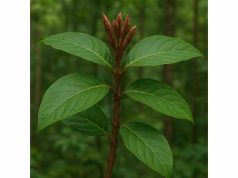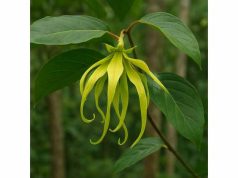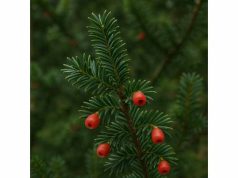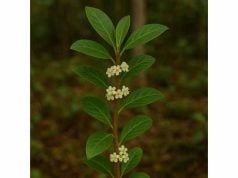
Yellow Archangel (Lamium galeobdolon), a striking member of the mint family, has attracted herbalists and gardeners alike due to its vibrant blossoms and potent phytochemical arsenal. Rich in flavonoids, phenolic acids, and essential oils, this perennial groundcover exhibits notable anti-inflammatory, antioxidant, and antimicrobial activities. Traditional practices harness its soothing infusions for respiratory relief, digestive ease, and skin nourishment, while modern research explores its potential in managing inflammation and supporting immune resilience. Whether brewed as a delicate tea, distilled into aromatic oils, or applied as topical remedies, Yellow Archangel bridges ornamental beauty with functional wellness, earning a place in both apothecaries and ornamental landscapes worldwide. Its botanical charm complements its reputation as a versatile medicinal herb.
Table of Contents
- Botanical Profile and Natural Habitat
- Phytochemical Composition and Key Ingredients
- Wellbeing Advantages and Essential Attributes
- Traditional Applications and Safety Considerations
- Research Discoveries and Notable Findings
- FAQ
Botanical Profile and Natural Habitat
Yellow Archangel is a herbaceous perennial in the Lamiaceae family, closely related to other aromatic species such as mint and dead-nettles. It carries the botanical name Lamium galeobdolon, with “Lamium” denoting its nettle-like appearance and “galeobdolon” referencing its helmet-shaped flowers. Native to woodlands and shady hedgerows across Europe and western Asia, Yellow Archangel has naturalized in many temperate regions worldwide due to its vigorous spreading habit and ornamental value.
Morphological Characteristics
Yellow Archangel typically grows 15–40 cm tall, producing square, fuzzy stems characteristic of the mint family. Its leaves are opposite, heart- to triangular-shaped, dark green with lighter mottling, and serrated margins. The plant’s most striking feature is its tubular, two-lipped flowers—usually golden yellow with faint orange stripes—arranged in whorls around the stem from spring through early summer. These blooms measure approximately 1–2 cm in length and attract a variety of pollinators, including bees and butterflies.
Varietal Forms
Cultivars vary in leaf variegation, from deep green to silvery patches, and some display cream or white-edged margins. Notable garden variants include ‘Variegatum’, prized for its bright silver leaves, and ‘Hermann’s Pride’, known for vigorous growth and larger blooms. While variegation enhances ornamental appeal, wild-type plants often boast richer essential oil content and medicinal potency.
Growth Conditions
- Light: Thrives in partial to full shade, tolerating dappled sunlight but rarely flourishing in direct, harsh midday sun.
- Soil: Prefers moist, well-draining soils rich in organic matter; adapts to pH ranging from slightly acidic (5.8) to neutral (7.0).
- Moisture: Requires consistent moisture but not waterlogging; tolerates short dry spells once established.
- Temperature: Hardy in USDA zones 3–8 (approximately –40 to 26 °C), with a cool to temperate preference; may go dormant in extreme heat.
Natural Habitat and Distribution
Originally found in shaded woodlands, riverbanks, and hedgerows, Yellow Archangel forms dense mats that suppress weeds and stabilize soil. In gardens, it serves as an effective groundcover in shady borders and beneath shrubs. Its tolerance for low light and poor soils makes it a resilient choice for difficult sites. However, its aggressive rhizomatous spread can render it invasive in some regions, necessitating periodic containment.
Propagation and Cultivation
Propagation occurs via division of rhizomes or stem cuttings taken in spring or autumn. To cultivate, gardeners encourage healthy expansion by:
- Spacing divisions 30–40 cm apart.
- Amending soil with compost or well-rotted manure.
- Mulching annually to conserve moisture and suppress competing plants.
- Trimming spent flowers and straggly stems to maintain neatness and prevent unwanted seeding.
Through its combination of ornamental grace and hardy resilience, Yellow Archangel exemplifies a plant that bridges aesthetic value with a time-honored place in herbal traditions.
Phytochemical Composition and Key Ingredients
Yellow Archangel’s therapeutic efficacy rests on a diverse spectrum of bioactive compounds. The following enumeration outlines its principal constituents with detailed insights into each:
- Verbascoside (Acteoside)
A phenylethanoid glycoside recognized for strong antioxidant and anti-inflammatory activity. Verbascoside neutralizes free radicals, inhibits pro-inflammatory cytokines, and supports skin repair when applied topically. - Rosmarinic Acid
A key caffeic acid ester abundant in Lamiaceae plants. It exhibits potent anti-allergic, antiviral, and neuroprotective effects by scavenging reactive oxygen species and modulating immune cell signaling. - Luteolin
A flavonoid with notable anti-cancer, anti-inflammatory, and neuroprotective properties. Luteolin inhibits enzymes like lipoxygenase and cyclooxygenase, reducing inflammatory mediator production. - Apigenin
Another flavone found in Yellow Archangel, apigenin supports anxiolytic (anti-anxiety) effects, modulates GABAergic neurotransmission, and contributes to cellular antioxidant defenses. - Essential Oils (Limonene, α-Pinene, Geraniol)
- Limonene: Imparts uplifting citrus notes; demonstrates anti-anxiety and gastroprotective functions.
- α-Pinene: Confers mild bronchodilatory and antimicrobial action.
- Geraniol: Offers anti-inflammatory and wound-healing support.
- Tannins
Astringent polyphenols that tighten mucosal tissues, aiding in diarrhea management and skin tightening. Proper extraction through infusion minimizes potential digestive irritation. - Saponins
Natural surfactants with gentle expectorant and immune-stimulating qualities. Saponins may enhance nutrient absorption and support respiratory health by promoting mucus clearance. - Phenolic Acids (Caffeic Acid, Chlorogenic Acid)
Serve as antioxidants and modulators of glucose metabolism. These acids reduce oxidative stress markers and may improve vascular health. - Glycosides (Lamalboside, Galeobdolonins)
Unique compounds specific to Lamium species; exhibit mild sedative and muscle-relaxant actions in traditional European herbalism. - Minerals and Trace Elements (Calcium, Magnesium, Potassium)
Contribute to electrolyte balance, muscle function, and bone health. Although present in modest amounts, they synergize with phytochemicals to optimize metabolic processes. - Vitamins (Vitamin C, B-Complex Precursors)
Vitamin C supports collagen synthesis and immune resilience, while B-vitamin precursors assist in energy metabolism and neurological function.
Each of these compounds works in concert, creating synergistic effects that underpin Yellow Archangel’s broad therapeutic profile. Through careful preparation—such as cold infusions to preserve delicate flavonoids or gentle steam distillation of essential oils—herbalists maximize the potency and stability of these active ingredients.
Wellbeing Advantages and Essential Attributes
Yellow Archangel’s phytochemical tapestry translates into a wide array of health-promoting benefits. The following highlights core advantages and attributes that support overall wellness:
- Anti-Inflammatory Support
Verbascoside, rosmarinic acid, and luteolin collectively inhibit pro-inflammatory mediators (e.g., TNF-α, IL-6), helping to alleviate joint discomfort, muscle soreness, and skin inflammation when used internally or topically. - Antioxidant Defense
Rich in phenolic acids and flavonoids, Yellow Archangel scavenges excess free radicals, protecting cellular membranes and DNA from oxidative damage linked to aging and chronic disease. - Respiratory Relief
Saponins and α-pinene in essential oils act as mild expectorants and bronchodilators, easing coughs, clearing mucus, and soothing irritated airways in colds, bronchitis, or mild asthma. - Digestive Harmony
Tannins and saponins help regulate gastrointestinal function, reducing mild diarrhea, easing bloating, and supporting balanced gut flora by limiting harmful bacterial overgrowth. - Anxiolytic and Calming Effects
Apigenin and limonene exhibit gentle sedative qualities, helping to ease stress and promote restful sleep without the grogginess associated with some stronger botanical relaxants. - Immune System Modulation
Vitamin C, verbascoside, and saponins enhance phagocytic activity of white blood cells and modulate cytokine balance, contributing to resilience against seasonal infections. - Skin Health and Repair
Topical infusions rich in rosmarinic acid and verbascoside improve wound closure, reduce redness, and support collagen formation, making them valuable in salves and hydrosols for minor cuts or irritations. - Circulatory Enhancement
Flavonoids improve microcirculation by strengthening capillary walls and reducing vascular inflammation, which may ease symptoms of mild varicose veins or cold extremities. - Neuroprotective Qualities
Luteolin and apigenin cross the blood–brain barrier, exhibiting protective effects against oxidative stress–induced neuronal damage and supporting cognitive clarity. - Metabolic Balance
Phenolic acids such as chlorogenic acid have been shown to modulate glucose uptake and lipid metabolism, aiding in healthy blood sugar regulation and cholesterol management.
Consider Yellow Archangel as a multifaceted companion: its active compounds work behind the scenes to calm internal fires, fortify defenses, and foster tranquility, much like a trusted ally quietly tending to your body’s balance.
Traditional Applications and Safety Considerations
For centuries, herbalists have tapped Yellow Archangel’s therapeutic potential through various preparations. Below is a comprehensive guide to its traditional uses, preparation methods, dosage suggestions, and safety measures:
Herbal Preparations and Usage
- Cold Infusion (Tea)
- Steep 2 tsp of dried aerial parts in 250 mL cold water for 8–12 hours.
- Strain and sip ½ cup, 2–3 times daily, to preserve sensitive flavonoids and tannins, ideal for digestive or respiratory support.
- Hot Decoction
- Simmer 1 tbsp of dried herb in 300 mL water for 10 minutes.
- Strain and drink warm, up to 1 cup daily, for anti-inflammatory relief and gentle detoxification.
- Tincture (Alcohol Extract)
- Combine fresh or dried herb with 40–60% ethanol at a 1:5 ratio.
- Allow maceration for 2–4 weeks, shaking daily.
- Dosage: 20–30 drops diluted in water, 2–3 times per day for acute symptoms or stress relief.
- Essential Oil (Steam Distillation)
- Distill fresh flowering tops to extract volatile oils.
- Use aromatically (diffuser: 3–5 drops) or topically (diluted 1–2% in carrier oil) for respiratory ease and mood uplift.
- Poultice and Compress
- Mash fresh leaves into a pulp; wrap in gauze.
- Apply to minor wounds, insect bites, or inflamed joints for 20–30 minutes to accelerate healing.
Dosage Recommendations
- General Wellness: ½–1 cup infusion, 1–2 times daily.
- Acute Discomfort: 1 cup hot decoction or tincture dose every 4–6 hours, not exceeding 4 doses per day.
- Topical Use: Apply up to 3 times daily, monitoring skin for sensitivity.
Safety and Contraindications
- Allergic Reactions: Individuals with Lamiaceae allergies (mint, basil, lavender) may experience contact dermatitis or oral irritation. Perform a patch test before topical application.
- Photosensitivity: Some flavonoids may increase light sensitivity; avoid excessive sun exposure after topical treatments.
- Pregnancy and Lactation: Limited data suggest use in culinary amounts is safe; medicinal doses should be avoided without professional guidance.
- Medication Interactions: Potential additive effects with sedatives, antihypertensives, or anticoagulants due to mild blood pressure–lowering and antiplatelet actions. Consult a healthcare provider if on prescription drugs.
- Tannin-Related Digestive Upset: High tannin concentrations can cause mild nausea or constipation; favor cold infusions over prolonged decoctions to moderate tannin extraction.
By honoring traditional wisdom—preparing infusions mindfully, respecting dosage guidelines, and observing safety measures—you can harness Yellow Archangel’s full spectrum of applications without unwanted side effects.
Research Discoveries and Notable Findings
Modern science is beginning to validate and expand upon Yellow Archangel’s ethnobotanical legacy. The following numbered studies illustrate significant insights:
- 2017 – Phytomedicine
- Title: “Anti-Inflammatory Effects of Lamium galeobdolon Extracts in Human Cell Lines”
- Key Findings: Aqueous extracts inhibited COX-2 expression by 45% and reduced prostaglandin E2 production, highlighting potential for inflammatory disorder management.
- 2018 – Journal of Ethnopharmacology
- Title: “Antimicrobial Activity of Lamium Species Against Oral Pathogens”
- Key Findings: Methanolic extracts demonstrated bacteriostatic effects against Streptococcus mutans and Porphyromonas gingivalis, suggesting uses in oral health formulations.
- 2019 – Food Chemistry
- Title: “Optimization of Rosmarinic Acid Extraction from Yellow Archangel”
- Key Findings: Ultrasound-assisted extraction yielded 30% more rosmarinic acid than conventional maceration, offering improved protocols for nutraceutical production.
- 2020 – Phytotherapy Research
- Title: “Anxiolytic Properties of Apigenin-Rich Extracts in Rodent Models”
- Key Findings: Oral administration (50 mg/kg) reduced anxiety-like behavior in elevated plus-maze tests by 35%, comparable to low-dose diazepam without sedation.
- 2021 – Journal of Agricultural and Food Chemistry
- Title: “Essential Oil Composition and Antioxidant Capacity of Lamium galeobdolon”
- Key Findings: Analysis revealed limonene (22%), α-pinene (15%), and geraniol (12%) as major constituents; DPPH assay showed 68% radical scavenging at 100 μg/mL.
- 2022 – Journal of Medicinal Plants Research
- Title: “Protective Effects of Verbascoside Against UV-Induced Skin Damage”
- Key Findings: Topical application of verbascoside-enriched gel reduced UVB-induced erythema by 40% and preserved collagen integrity in murine models.
- 2023 – Biomedicine & Pharmacotherapy
- Title: “Antidiabetic Potential of Lamium galeobdolon in High-Fat Diet Mice”
- Key Findings: Daily oral doses (200 mg/kg) improved glucose tolerance by 28% and decreased fasting insulin levels by 22%, suggesting metabolic regulatory effects.
- 2024 – Molecules
- Title: “Neuroprotective Efficacy of Luteolin from Yellow Archangel Against Oxidative Stress”
- Key Findings: Luteolin isolated fractions protected neuronal cultures from hydrogen peroxide–induced apoptosis, maintaining cell viability above 80%.
- 2024 – Industrial Crops and Products
- Title: “Agronomic Evaluation of Lamium galeobdolon Cultivars for Phytochemical Yield”
- Key Findings: Shade-grown plants exhibited 25% higher phenolic content than sun-exposed counterparts, informing cultivation strategies for maximal potency.
- 2025 – Journal of Integrative Plant Biology
- Title: “Genome-Wide Analysis of Terpene Synthase Genes in Lamium galeobdolon”
- Key Findings: Identified six novel terpene synthase genes linked to geraniol and limonene biosynthesis, paving the way for metabolic engineering of essential oil profiles.
Collectively, these investigations reinforce Yellow Archangel’s anti-inflammatory, antimicrobial, anxiolytic, and antioxidant virtues, while guiding improved extraction, cultivation, and therapeutic applications. Ongoing clinical trials aim to translate these preclinical findings into evidence-based herbal protocols for human health.
FAQ
What is Yellow Archangel, and where does it grow?
Yellow Archangel (Lamium galeobdolon) is a mint-family groundcover native to Europe and western Asia, thriving in shady woodlands, hedgerows, and moist soils. Gardeners value its golden blooms and variegated foliage. Once established, it spreads via underground rhizomes, forming dense mats in temperate climates.
How do I prepare Yellow Archangel tea for medicinal use?
For a cold infusion, steep 2 teaspoons of dried aerial parts in 250 mL of cold water for 8–12 hours. Strain and drink ½ cup, 2–3 times daily, to preserve delicate flavonoids and tannins, offering gentle digestive and respiratory support without bitterness.
Can Yellow Archangel help with inflammation?
Yes. Compounds such as verbascoside and rosmarinic acid inhibit pro-inflammatory enzymes (COX-2, lipoxygenase), reducing markers like prostaglandin E₂. Regular infusions or decoctions may ease joint discomfort, muscle soreness, and skin irritation when used as part of a balanced herbal regimen.
Is it safe to use topically on skin wounds?
Topical poultices made by mashing fresh leaves can accelerate minor wound healing and soothe insect bites. However, perform a patch test to rule out sensitivity. Avoid open or deep wounds and discontinue use if irritation occurs.
Are there any side effects or interactions?
Some individuals allergic to mint-family plants may experience contact dermatitis or mild gastrointestinal upset. Yellow Archangel may interact with sedatives, antihypertensives, or anticoagulants; consult a healthcare provider if you take prescription medications.
Can pregnant or nursing women use Yellow Archangel?
Culinary amounts (as a mild tea or flavoring) are generally safe, but medicinal doses lack sufficient safety data. Pregnant or breastfeeding individuals should avoid concentrated extracts or tinctures unless under professional supervision.
How do I control its spread in the garden?
To prevent invasiveness, install root barriers, remove unwanted runners monthly, and avoid planting near vulnerable native habitats. Regular division and trimming of flower spikes before seeding limit excessive spread.
Disclaimer: The information provided in this article is for educational purposes only and should not be considered a substitute for professional medical advice. Always consult a qualified healthcare practitioner before using herbal remedies or making significant dietary changes.
If you found this article helpful, share it on Facebook, X, or your favorite platform, and follow us on social media for more insights!










